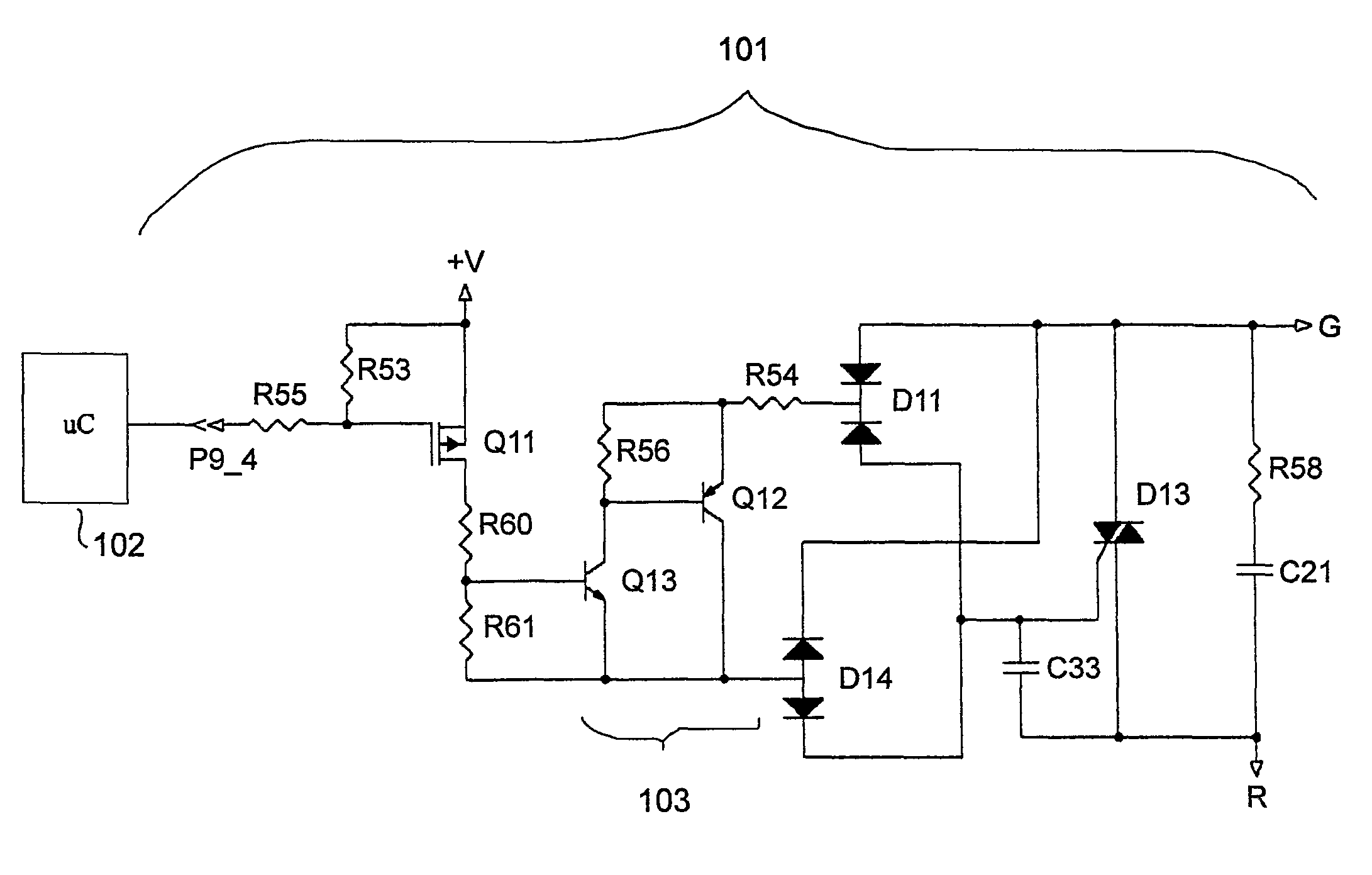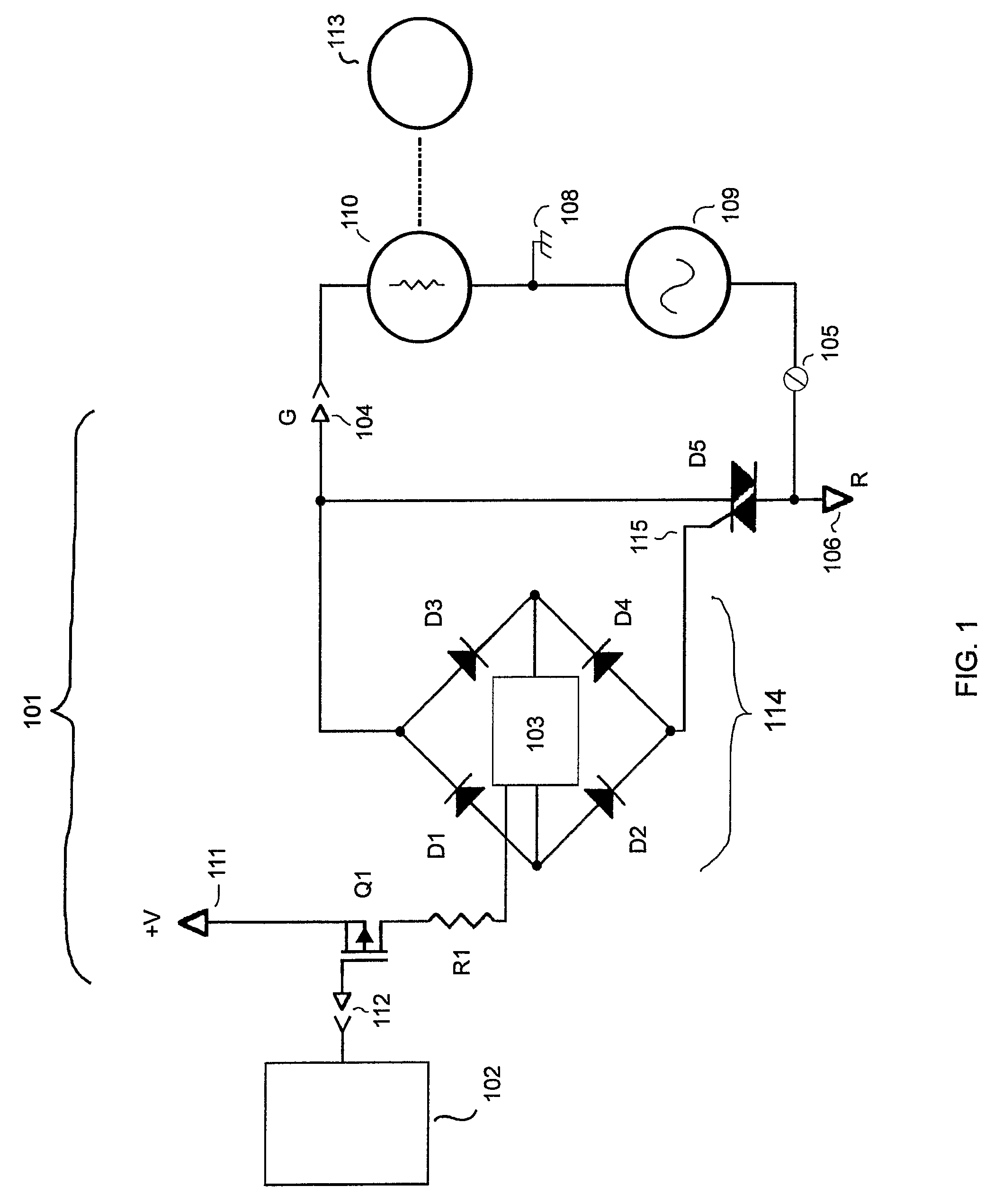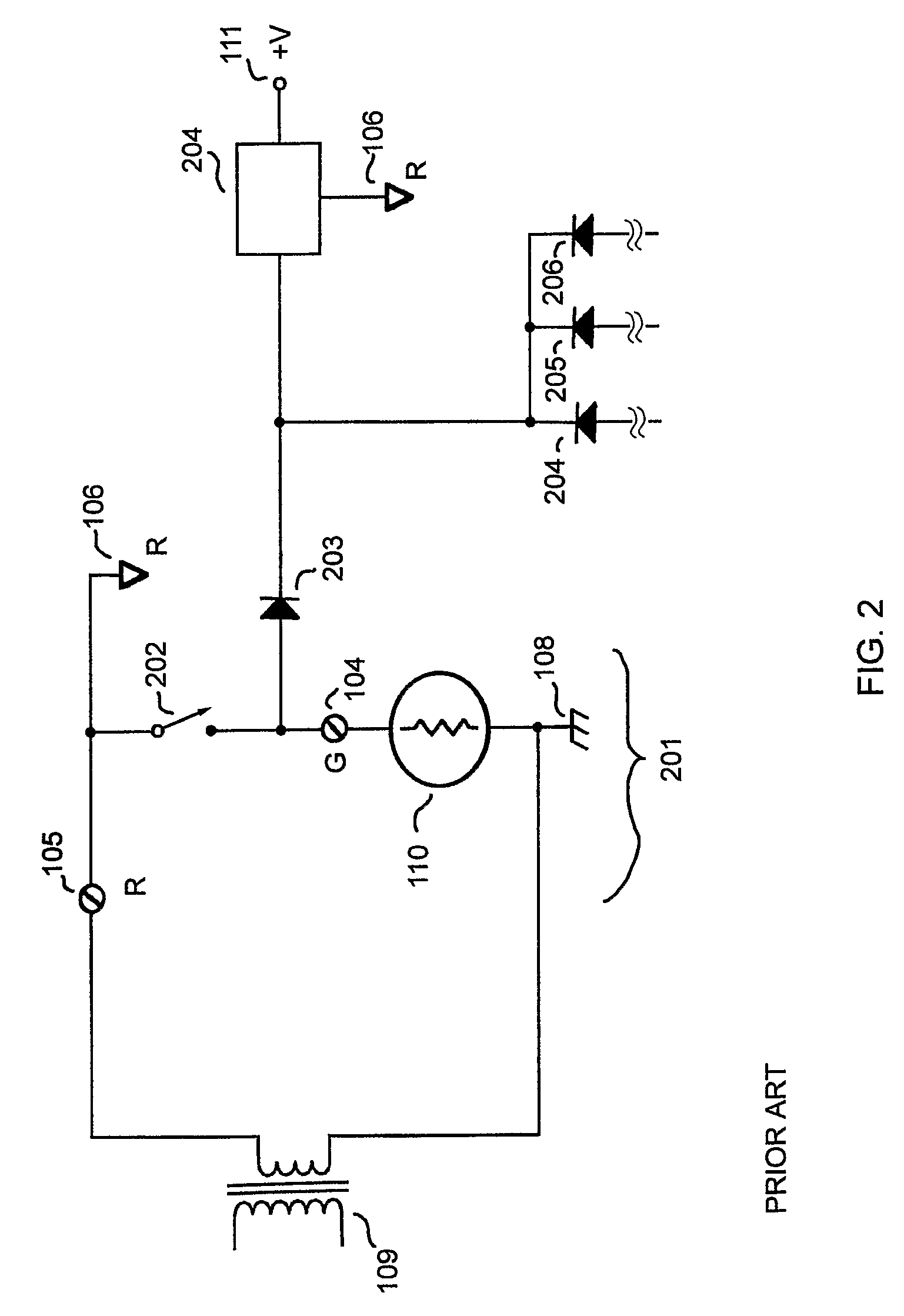Power stealing for a thermostat using a TRIAC with FET control
a triac and thermostat technology, applied in the direction of process and machine control, emergency protective circuit arrangement, electric vehicles, etc., can solve the problem of significant battery drain, and achieve the effect of improving power th
- Summary
- Abstract
- Description
- Claims
- Application Information
AI Technical Summary
Benefits of technology
Problems solved by technology
Method used
Image
Examples
example
[0021]FIG. 4 shows an advantageous embodiment of the inventive circuit topology 101 of FIG. 1. It is to be understood that these component values and component types are merely exemplary values and types that were used in a particular embodiment of the inventive circuit topology. For example, any suitable P channel enhancement mode FET can be used as Q11, or any suitable NPN or PNP transistors can be used as Q12 and Q13. Similarly, the values of resistors and capacitors can be varied in other embodiments.
[0022]It is to be noted that a particular embodiment of the exemplary output circuit topology 101 of FIG. 4 has the following component values:
Q11 BSS84, P channel enhancement mode FET
Q13 MMBTA05LT1
Q12 MMBTA55LT1
D11 MMBD1204
D14 MMBD1205
D13 T405-600B
R53 2.2 Meg Ohms
R54 2.2 kilo Ohms
R55 1 Meg Ohms
R60 100 kilo Ohms
R61 150 kilo Ohms
R56 4.7 kilo Ohms
R58 150 Ohms
C21, C33 0.1 micro Farads
[0023]The operation of the circuit of FIG. 4 when the components have the particular values as set fort...
PUM
 Login to View More
Login to View More Abstract
Description
Claims
Application Information
 Login to View More
Login to View More - R&D
- Intellectual Property
- Life Sciences
- Materials
- Tech Scout
- Unparalleled Data Quality
- Higher Quality Content
- 60% Fewer Hallucinations
Browse by: Latest US Patents, China's latest patents, Technical Efficacy Thesaurus, Application Domain, Technology Topic, Popular Technical Reports.
© 2025 PatSnap. All rights reserved.Legal|Privacy policy|Modern Slavery Act Transparency Statement|Sitemap|About US| Contact US: help@patsnap.com



